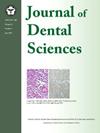在模拟临床环境中评估一种具有镍钛合金弹性连杆的防打鼾装置
IF 3.1
3区 医学
Q1 DENTISTRY, ORAL SURGERY & MEDICINE
引用次数: 0
摘要
背景/目的阻塞性睡眠呼吸暂停(OSA)是一种常见的睡眠相关呼吸障碍,通常通过下颌推进装置(MADs)治疗。然而,传统的MADs经常伴有不适、僵硬和患者依从性有限。本研究旨在设计和评估一种定制的防打鼾装置,该装置采用镍钛(Ni-Ti)合金弹性连接器,以提高舒适性,耐用性和临床性能。材料与方法该装置由上下双层托盘组成,并通过Ni-Ti合金棒连接。对三种材料(Ni-Ti、不锈钢和聚碳酸酯)的应力和变形特性进行了有限元分析。同时进行了模拟长期使用的疲劳试验。进行了一项临床模拟,涉及7名诊断为轻度至中度OSA的成人参与者,包括为期7天的试验和试验后问卷调查,评估舒适度、适合度和有效性。结果有限元分析结果表明,Ni-Ti连接器具有最均匀的应力分布和最高的变形能力,具有较好的弹性和回弹性。在500万次循环后,疲劳试验证实了结构的稳定性。主观评价表明用户满意度高,症状缓解效果明显;然而,一些不适相关的口腔干燥和颞下颌关节(TMJ)压力的报道。结论镍钛基抗鼾器具有良好的生物力学性能和临床实用性。它为传统MADs提供了一个有希望的替代方案,有可能提高患者的长期依从性和治疗结果。进一步的临床验证是必要的。本文章由计算机程序翻译,如有差异,请以英文原文为准。
Evaluation of an anti-snoring device featuring a Ni–Ti alloy elastic linkage in a simulated clinical environment
Background/purpose
Obstructive sleep apnea (OSA) is a common sleep-related breathing disorder that is often treated by mandibular advancement devices (MADs). However, conventional MADs are frequently associated with discomfort, rigidity, and limited patient compliance. This study aimed to design and evaluate a custom-made anti-snoring device featuring a nickel-titanium (Ni–Ti) alloy elastic connector to improve comfort, durability, and clinical performance.
Materials and methods
The device consisted of dual-layer upper and lower trays and was connected via Ni–Ti alloy rods. Finite element analysis (FEA) was conducted to compare the stress and deformation characteristics of three materials (Ni–Ti, stainless steel, and polycarbonate). Fatigue testing was also performed to simulate the long-term use. A clinical simulation involving seven adult participants diagnosed with mild to moderate OSA was conducted, including a seven-day trial and a post-trial questionnaire that evaluated comfort, fit, and effectiveness.
Results
FEA revealed that the Ni–Ti connector exhibited the most uniform stress distribution and the highest deformation capacity, indicating superior elasticity and resilience. Fatigue tests confirmed the structural stability after 5 million cycles. Subjective evaluations indicated the high user satisfaction and effective symptom relief; however, some discomfort related to oral dryness and temporomandibular joint (TMJ) pressure was reported.
Conclusion
The Ni–Ti-based anti-snoring device demonstrated favorable biomechanical properties and clinical usability. It offers a promising alternative to traditional MADs, potentially enhancing a long-term patient compliance and therapeutic outcomes. Further clinical validation is warranted.
求助全文
通过发布文献求助,成功后即可免费获取论文全文。
去求助
来源期刊

Journal of Dental Sciences
医学-牙科与口腔外科
CiteScore
5.10
自引率
14.30%
发文量
348
审稿时长
6 days
期刊介绍:
he Journal of Dental Sciences (JDS), published quarterly, is the official and open access publication of the Association for Dental Sciences of the Republic of China (ADS-ROC). The precedent journal of the JDS is the Chinese Dental Journal (CDJ) which had already been covered by MEDLINE in 1988. As the CDJ continued to prove its importance in the region, the ADS-ROC decided to move to the international community by publishing an English journal. Hence, the birth of the JDS in 2006. The JDS is indexed in the SCI Expanded since 2008. It is also indexed in Scopus, and EMCare, ScienceDirect, SIIC Data Bases.
The topics covered by the JDS include all fields of basic and clinical dentistry. Some manuscripts focusing on the study of certain endemic diseases such as dental caries and periodontal diseases in particular regions of any country as well as oral pre-cancers, oral cancers, and oral submucous fibrosis related to betel nut chewing habit are also considered for publication. Besides, the JDS also publishes articles about the efficacy of a new treatment modality on oral verrucous hyperplasia or early oral squamous cell carcinoma.
 求助内容:
求助内容: 应助结果提醒方式:
应助结果提醒方式:


